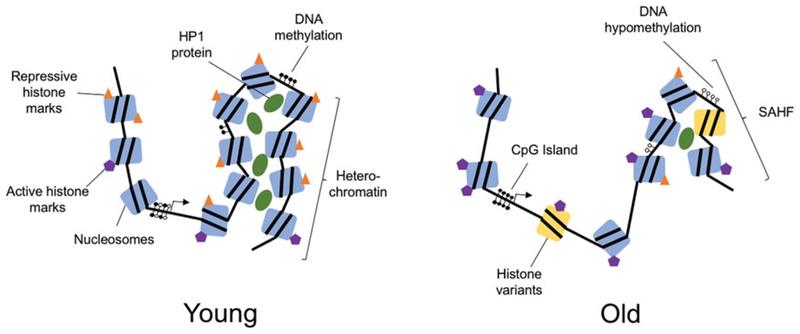Figure 1.
Age-related changes to chromatin. With increasing age, there are both global and loci-specific changes to chromatin structure. Young chromatin is characterized by predominantly tightly packaged heterochromatin, with repressive histone marks and HP1 protein binding. Nucleosomes are made up of canonical histone proteins and there is an abundance of DNA cytosine methylation. Chromatin of cells from old individuals is characterized by globally reduced heterochromatin with specific areas of heterochromatin known as senescence-associated heterochromatin foci (SAHF). There is a decrease in repressive histone marks and an increase in active histone marks. Non-canonical histone variants are included in nucleosomes and there is general nucleo-some loss. Additionally, there is global DNA hypomethylation except in CpG islands where there is hypermethylation (see the color version of this figure at www.tandfonline.com/ibmg).

